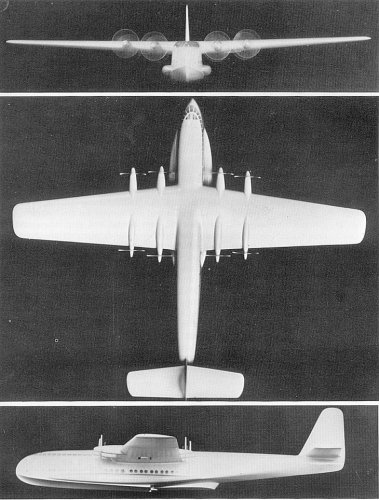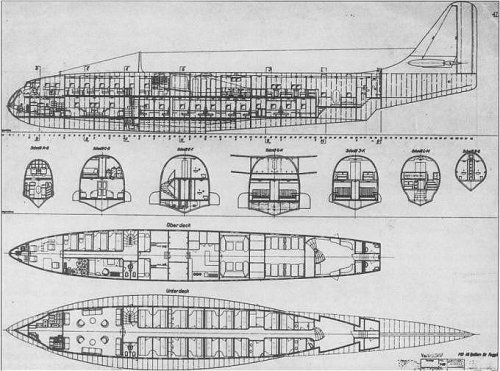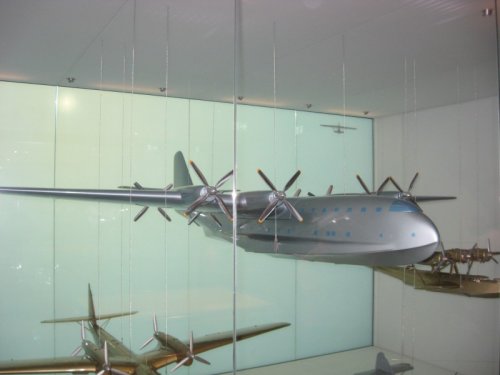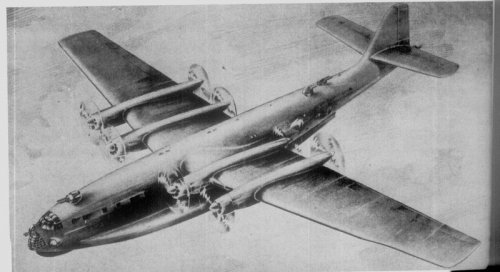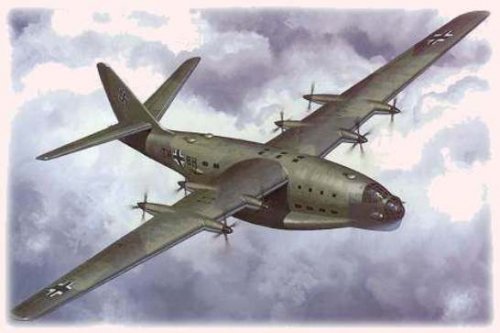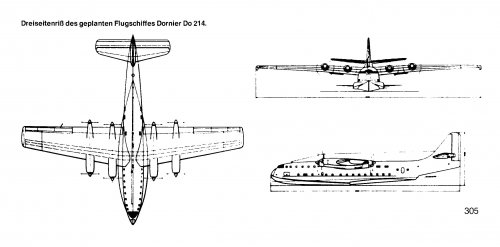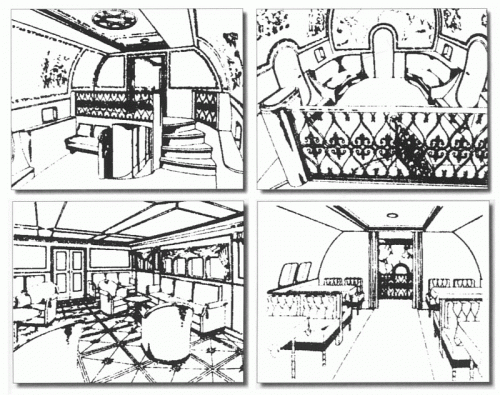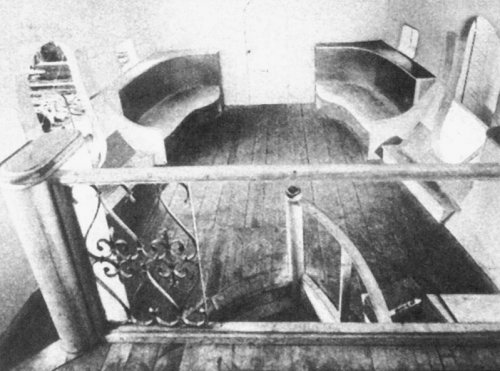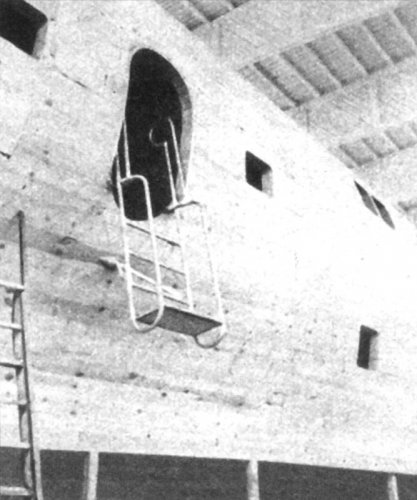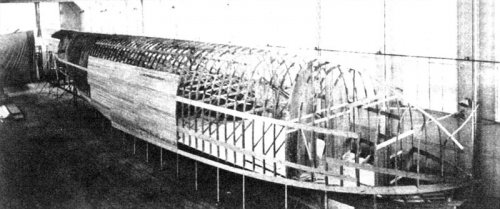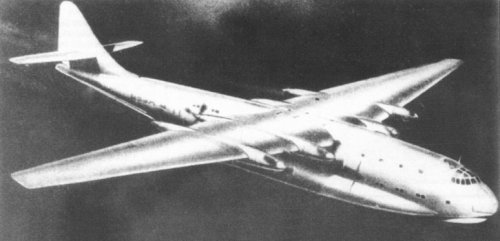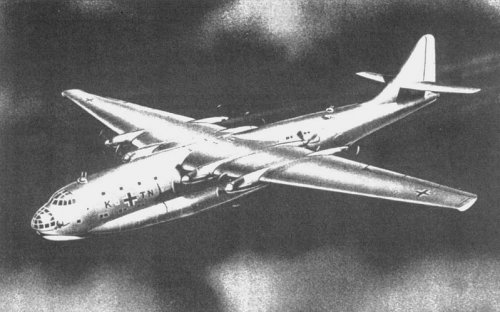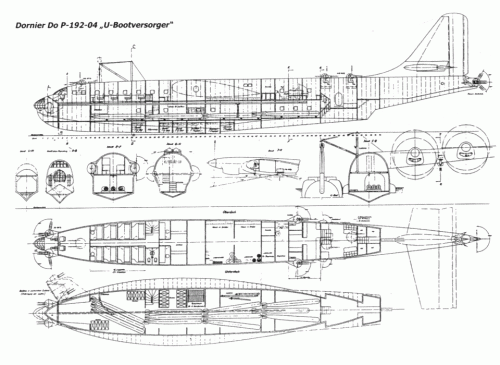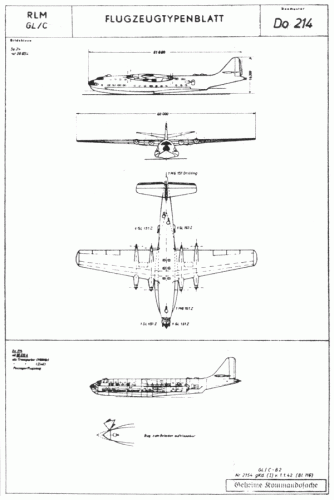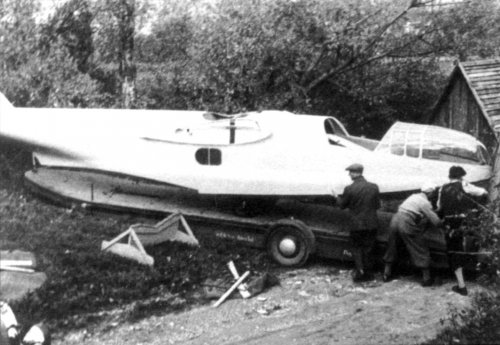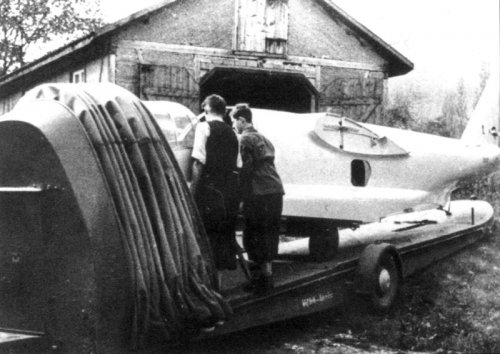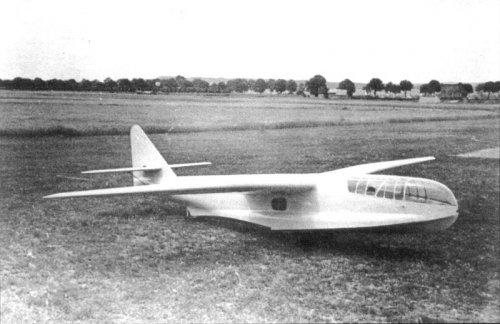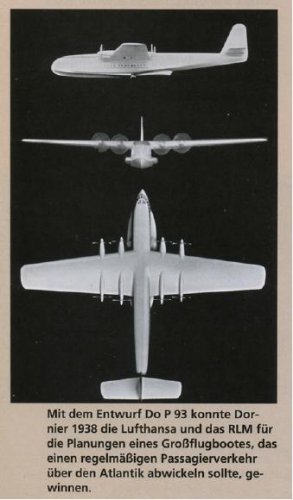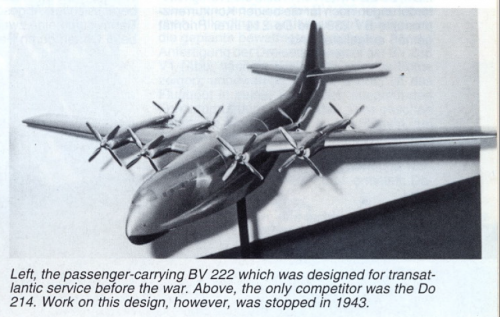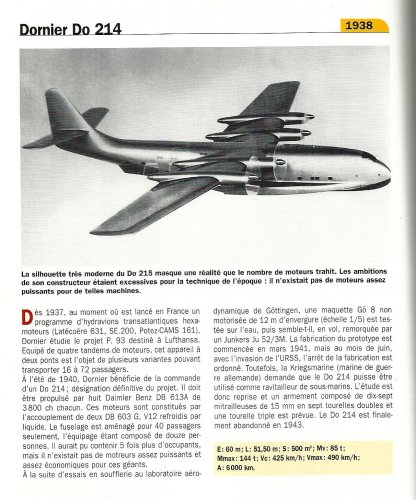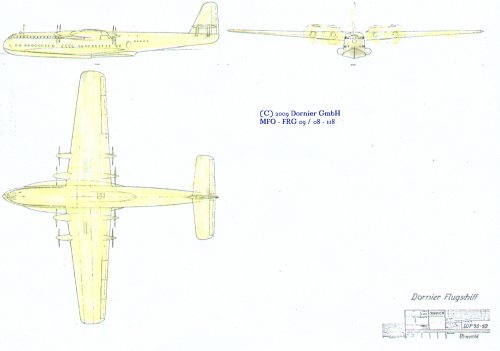You are using an out of date browser. It may not display this or other websites correctly.
You should upgrade or use an alternative browser.
You should upgrade or use an alternative browser.
Dornier Do 214
- Thread starter Triton
- Start date
Model of Do 214 at the Dornier museum in Friedrichshafen.
Source: http://de.wikipedia.org/w/index.php?title=Datei:Modell_Dornier_Do_214.jpg&filetimestamp=20090815211305
Source: http://de.wikipedia.org/w/index.php?title=Datei:Modell_Dornier_Do_214.jpg&filetimestamp=20090815211305
Attachments
Artist's impression of Dornier Do 214.
Source: http://community.livejournal.com/ru_aviation/1409912.html
Source: http://community.livejournal.com/ru_aviation/1409912.html
Attachments
- Joined
- 7 June 2009
- Messages
- 532
- Reaction score
- 159
Some more: http://www.luft46.com/dornier/do214.html
- Joined
- 9 October 2009
- Messages
- 21,976
- Reaction score
- 13,638
redstar72 said:
By 1943, it was realized that long-range flying boats were not needed due to the worsening war situation, and thus the Do 214 project was canceled.
That move by the RLM might have been a trifle premature, given that long range transports were even then urgently needed to maintain links with Japan.
taildragger
You can count on me - I won a contest
- Joined
- 2 November 2008
- Messages
- 404
- Reaction score
- 502
Grey Havoc said:redstar72 said:
By 1943, it was realized that long-range flying boats were not needed due to the worsening war situation, and thus the Do 214 project was canceled.
That move by the RLM might have been a trifle premature, given that long range transports were even then urgently needed to maintain links with Japan.
I don't imagine that maintaining links to Japan, especially air links, was of much importance to German planners by 1943. What of significance was exchanged between the 2 allies during the war?
- Joined
- 9 October 2009
- Messages
- 21,976
- Reaction score
- 13,638
taildragger said:I don't imagine that maintaining links to Japan, especially air links, was of much importance to German planners by 1943. What of significance was exchanged between the 2 allies during the war?
Technology, in the form of designs, licences and hardware samples, strategic materials, couriers. Also experts in various fields, both military and civilian.
- Joined
- 30 November 2007
- Messages
- 1,126
- Reaction score
- 592
Re: Dornier Do-214 eight-engine long-range passenger flying-boat project......
Dear Boys and Girls, what was such a large flying-boat airliner actually for? It is hardly competitive in terms of seat-mile costs with a contemporary high-performance landplane type. I also wonder where Deutsche Lufthansa might have thought they would fly this airliner to in 1941; I can't find any reference to German transatlantic air traffic durung the war years. Did the totalitarian nazi state allow its citizens to travel abroad freely anyway? Surely the nazis would have frowned on planeloads of eager German tourists wanting to fly off to visit the non-aryan Imperial Japan......
Terry (Caravellarella)
Dear Boys and Girls, what was such a large flying-boat airliner actually for? It is hardly competitive in terms of seat-mile costs with a contemporary high-performance landplane type. I also wonder where Deutsche Lufthansa might have thought they would fly this airliner to in 1941; I can't find any reference to German transatlantic air traffic durung the war years. Did the totalitarian nazi state allow its citizens to travel abroad freely anyway? Surely the nazis would have frowned on planeloads of eager German tourists wanting to fly off to visit the non-aryan Imperial Japan......
Terry (Caravellarella)
- Joined
- 9 October 2009
- Messages
- 21,976
- Reaction score
- 13,638
The design was originally drawn up as the Do P.93 in 1940, in response to a requirement (presumably from the RLM, in other words, German Air Ministry) for a plane capable of operating a passenger transatlantic service from Lisbon to New York. This was back when the Germans thought the end of the war was in sight and before the US had entered the war on Britain's side. Military versions came under the P.192 designation. The entire program received the 214 designation from the RLM in late 1940 after successful tests of various design elements involving the Göppingen laboratories, which included a towed hydrodynamic testbed.
According to the Luft46 article, the civil version would have had a crew of 12, including two stewards and two air hostesses, and would have been able to carry at least 40 passengers in comfort (with the option of increasing that number), and also carry 2.6 metric tons of freight and luggage in the lower fuselage storage area.
However, with the deteriorating war situation in 1942, the RLM was annoyed to find that Dornier was still working on the civilian version, and ordered them to concentrate on the military versions.
According to the Luft46 article, the civil version would have had a crew of 12, including two stewards and two air hostesses, and would have been able to carry at least 40 passengers in comfort (with the option of increasing that number), and also carry 2.6 metric tons of freight and luggage in the lower fuselage storage area.
However, with the deteriorating war situation in 1942, the RLM was annoyed to find that Dornier was still working on the civilian version, and ordered them to concentrate on the military versions.
- Joined
- 8 March 2009
- Messages
- 1,056
- Reaction score
- 1,299
It should also be mentioned that doiner wasn't the only company working on long range commercial transports at that time. I think focke-wulf proposed a pretty impressive land plane around the same time. This was also proposed at a time when lots of people/companies still thought large sea planes were the best option for long trans-ocean flights.
taildragger
You can count on me - I won a contest
- Joined
- 2 November 2008
- Messages
- 404
- Reaction score
- 502
Grey Havoc said:taildragger said:I don't imagine that maintaining links to Japan, especially air links, was of much importance to German planners by 1943. What of significance was exchanged between the 2 allies during the war?
Technology, in the form of designs, licences and hardware samples, strategic materials, couriers. Also experts in various fields, both military and civilian.
Yeah, I know about the aircraft designs sent to Japan and the submarine traffic, but did any of these exchanges materially affect Germany's position in the war? By 1943, was there any realistic prospect that they could? Even if the exchanges could have staved off defeat, how is a big expensive, vulnerable flying boat a better investment than a submarine? By this stage German troops were freezing to death in Russia and the Luftwaffe was being ground down by the bomber offensive. Global reach aircraft like this and the Amerika-bomber were irrelevant to Germany's situation.
Can't remember the exact date, but believe it was 1943 and I do have a copy of it (somewhere). There was a Luftwaffe study , the subject being feasibility of bring strategic materials to Nazi territory from Japanese territory using aircraft. The routes, aircraft, resources, quantities of materials transported, etc. were all considered. Don't try to reject such plans with what we now know or try to be to rational. My theory is you can drive yourself crazy trying to be rational about what was an irrational act. The third reich offers many such opportunities.
Best Regards,
Artie Bob
Best Regards,
Artie Bob
- Joined
- 11 March 2006
- Messages
- 8,625
- Reaction score
- 3,806
A 3-view of the civil version of the Do 214 from Fred Gütschow "Die deutschen Flugboote".
From all I know, the military use of the Do 214 and the use as a transport for rare resources
was more or less an attempt to rescue this project, which otherwise would have been axed because
of "not needed for the war effort".
From all I know, the military use of the Do 214 and the use as a transport for rare resources
was more or less an attempt to rescue this project, which otherwise would have been axed because
of "not needed for the war effort".
Attachments
Silencer1
That now I am the Ruler of the Queen's Navee!
- Joined
- 3 August 2009
- Messages
- 897
- Reaction score
- 582
taildragger
You can count on me - I won a contest
- Joined
- 2 November 2008
- Messages
- 404
- Reaction score
- 502
Artie Bob said:Can't remember the exact date, but believe it was 1943 and I do have a copy of it (somewhere). There was a Luftwaffe study , the subject being feasibility of bring strategic materials to Nazi territory from Japanese territory using aircraft. The routes, aircraft, resources, quantities of materials transported, etc. were all considered. Don't try to reject such plans with what we now know or try to be to rational. My theory is you can drive yourself crazy trying to be rational about what was an irrational act. The third reich offers many such opportunities.
Best Regards,
Artie Bob
I was responding to the following statement:
"By 1943, it was realized that long-range flying boats were not needed due to the worsening war situation, and thus the Do 214 project was canceled.
That move by the RLM might have been a trifle premature, given that long range transports were even then urgently needed to maintain links with Japan."
The Germans had a lot of urgent needs in 1943 - a huge, advanced seaplane to establish an air link to Tokyo wasn't one of them. Yes, it would have been a cool-looking airplane and I too would rather look at photos of hardware than project drawings. The Germans, however, looked at their requirements (presumably including the "urgent need to maintain links with Japan") and decided that the project wasn't worth the cost. Speculation 70 years later that they were short-sighted or unaware of what they really needed, without identifying the war-winning cargo that couldn't come from Japan by U-Boat, seems a little silly.
- Joined
- 9 October 2009
- Messages
- 21,976
- Reaction score
- 13,638
taildragger said:The Germans had a lot of urgent needs in 1943 - a huge, advanced seaplane to establish an air link to Tokyo wasn't one of them. Yes, it would have been a cool-looking airplane and I too would rather look at photos of hardware than project drawings. The Germans, however, looked at their requirements (presumably including the "urgent need to maintain links with Japan") and decided that the project wasn't worth the cost. Speculation 70 years later that they were short-sighted or unaware of what they really needed, without identifying the war-winning cargo that couldn't come from Japan by U-Boat, seems a little silly.
Perhaps. On the other hand, maintaining links with Japan using U-boats proved to be slow (partly due to measures needed to try and evade allied forces) and somewhat unreliable, especially as the war increasingly turned against the Axis powers. And when it comes to couriers for example, you often need the fastest transport available. Another advantage of a long range floatplane as a transport is that you are not necessarily tied to a particular route or reliant on vulnerable airfields in order to complete your mission. Not to mention that the Germans had a shortage of large long-range landplanes in the first place.
Silencer1 said:One of the most intriguing versions of miltary Do-214 was U-boot's open-sea supplier.
Here is the picture from luft46.com - note torpedo storages and cranes to unloading them on board of submarines?
Not bad!
If they could have deployed that as late as early 1944 (although mid-'43 might be more realistic, operationally speaking), it might have made some difference to the U-boat campaign. They wouldn't have been as dependent on increasingly scarce 'milch cows' (cargo/resupply U-boats) for one thing. Allied forces went after them with a vengence. If the U-boats had been able to at least stall Allied offensive operations in the West, logistics wise, the Germans would have been able to divert more resources to the Eastern Front, potentially prolonging the war. But that's a big 'what-if'.
- Joined
- 22 April 2012
- Messages
- 2,258
- Reaction score
- 2,309
Grey Havoc said:If they could have deployed that as late as early 1944 (although mid-'43 might be more realistic, operationally speaking), it might have made some difference to the U-boat campaign. They wouldn't have been as dependent on increasingly scarce 'milch cows' (cargo/resupply U-boats) for one thing. Allied forces went after them with a vengence. If the U-boats had been able to at least stall Allied offensive operations in the West, logistics wise, the Germans would have been able to divert more resources to the Eastern Front, potentially prolonging the war. But that's a big 'what-if'.
A giant flying boat is not going to rectify the fundamental vulnerabilities of pre-45 U-boats. Also, do you know what an escort carrier is?
- Joined
- 9 October 2009
- Messages
- 21,976
- Reaction score
- 13,638
You mean using escort carriers to set up CAPs along predicted routes you mean? Although the carriers would likely then require considerable escort and support assets themselves. Also, if IIRC, up to late 1943, escort carriers were in relatively short supply (big demand). And as for the resupply mission, remember that logistics (i.e. weapons, fuel, spare parts and food) was always one of the major weaknesses of U-boat operations.
You are right though that some form of air cover would have been probably required in some operational areas. Less easy to arrange as time went on and the war went south for Germany and her allies.
You are right though that some form of air cover would have been probably required in some operational areas. Less easy to arrange as time went on and the war went south for Germany and her allies.
- Joined
- 22 April 2012
- Messages
- 2,258
- Reaction score
- 2,309
Grey Havoc said:You mean using escort carriers to set up CAPs along predicted routes you mean? Although the carriers would likely then require considerable escort and support assets themselves. Also, if IIRC, up to late 1943, escort carriers were in relatively short supply (big demand). And as for the resupply mission, remember that logistics (i.e. weapons, fuel, spare parts and food) was always one of the major weaknesses of U-boat operations.
No the major weakness was they kept getting sunk leaving a horrendous kill ratio. Not a problem that could be solved by a giant and very vulnerable (see the Ju-290 fleet) flying boat.
- Joined
- 9 October 2009
- Messages
- 21,976
- Reaction score
- 13,638
sealordlawrence said:Grey Havoc said:You mean using escort carriers to set up CAPs along predicted routes you mean? Although the carriers would likely then require considerable escort and support assets themselves. Also, if IIRC, up to late 1943, escort carriers were in relatively short supply (big demand). And as for the resupply mission, remember that logistics (i.e. weapons, fuel, spare parts and food) was always one of the major weaknesses of U-boat operations.
No the major weakness was they kept getting sunk leaving a horrendous kill ratio. Not a problem that could be solved by a giant and very vulnerable flying boat.
Up to late 44, the boot was often on the other foot loss wise. But losses were a problem for U-boats I agree. Without going off-topic, how would you have reversed or reduced U-boat losses, if you had been Kriegsmarine commander and could charm or outmanoeuvre Hitler?
- Joined
- 22 April 2012
- Messages
- 2,258
- Reaction score
- 2,309
Grey Havoc said:Up to late 44, the boot was often on the other foot loss wise.
Black May.
- Joined
- 9 October 2009
- Messages
- 21,976
- Reaction score
- 13,638
They were still able to inflict pretty heavy losses even after that. So, how would you have handled it?
Actually, going back to the Ju-290 for a minute, might further development of the Do 214 not proven a better use of resources than continuing with the Junkers design? Although, to be fair, it did have potential (and saw limited use) as a valuable maritime reconnaissance bird.
Actually, going back to the Ju-290 for a minute, might further development of the Do 214 not proven a better use of resources than continuing with the Junkers design? Although, to be fair, it did have potential (and saw limited use) as a valuable maritime reconnaissance bird.
- Joined
- 22 April 2012
- Messages
- 2,258
- Reaction score
- 2,309
Grey Havoc said:They were still able to inflict pretty heavy losses even after that.
From my previous post: No the major weakness was they kept getting sunk leaving a horrendous kill ratio.
And I am not dragging this topic any further off-topic.
- Joined
- 9 October 2009
- Messages
- 21,976
- Reaction score
- 13,638
Fair enough. Another day, another (dedicated) topic perhaps. Did you see my question about the Ju-290?
- Joined
- 9 October 2009
- Messages
- 21,976
- Reaction score
- 13,638
The basic concept behind the Do 214 didn't quite die with the project's shelving in 1943. Post war, for example, the British Saunders-Roe company looked at a somewhat similar design, although it originally began as a PR exercise!
- Joined
- 25 June 2009
- Messages
- 14,754
- Reaction score
- 6,155
Contrary to what was written above, the Do 214 WAS the original, commercial model. The military derivative proposals only came later and were developed under the P.192 designation:
- Do P.192-01 "Transporter" (transport)
- Do P.192-02 "Truppentransporter" (troop transport)
- Do P.192-03 "Lastentransporter" (cargo transport)
- Do P.192-04 "U-Bootversorger" (submarine supplier)
- Do P.192-05 "Minenleger" (minelayer)
- Do P.192-06 "Kraftsofftransporter" (fuel transport)
- Do P.192-07 "Truppentransporter2" (troop transport 2)
- Do P.192-08 "Sanitätstransporter" (ambulance transport)
- Do P.192-09 long range bomber and guided weapon carrier
Attachments
- Joined
- 25 June 2009
- Messages
- 14,754
- Reaction score
- 6,155
Three more pictures:
- A version of the painting posted above, this time in military guise (no specific variant)
- A cutaway plan of the P.192-04 "submarine supplier" variant
- The official RLM reference file for the Do 214 with three-view arrangement and cutaway profile view
Attachments
- Joined
- 25 June 2009
- Messages
- 14,754
- Reaction score
- 6,155
- Joined
- 25 June 2009
- Messages
- 14,754
- Reaction score
- 6,155
airman said:http://www.luft46.com/dornier/do214.html
luft46 put also P.192.09 like long range bomber and guided weapon carrier .
Thanks a lot airman! I've updated the list.
- Joined
- 26 May 2006
- Messages
- 34,911
- Reaction score
- 15,789
Triton said:
My dear Triton,
here is a more clearance picture to Dornier P.93. Flugzeug classic 7/2007
Attachments
Similar threads
-
-
Secret Projects of the Luftwaffe by Dan Sharp
- Started by newsdeskdan
- Replies: 49
-
-
Roter Rhein , Krasnyy Reyn - What If The Axis Members Called It Quits In Early 1943?
- Started by TheRejectionist
- Replies: 36

